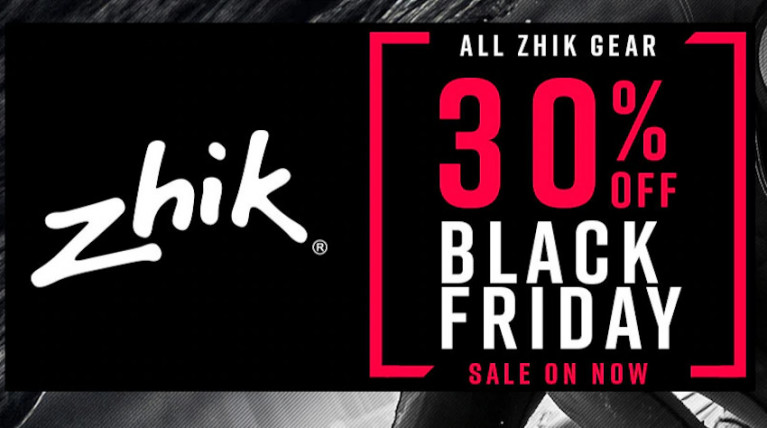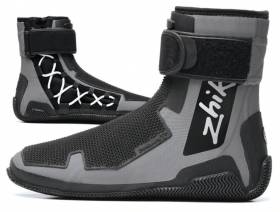Displaying items by tag: Zhik
Huge Savings on Zhik Superwarm Suits With CH Marine
Enjoy huge savings on Zhik Superwarm X and V suits at CH Marine right now.
These high-performance neoprene suits and tops for men and women from one of the top marine clothing brands are perfect quality for winter and cold-water wear.
But act fast as these greatly reduced prices are only available while stocks last.
And don’t miss the Cork chandlery’s wide variety of brands and products available online at CHMarine.com.
Big Savings on Zhik Jackets With CH Marine
Big savings on Zhik jackets can be had at CH Marine right now, with up to 50% off a range of Z-Cru and INS100 jackets.
But be sure to act fast as these prices are only good while stocks last!
And don’t miss the Cork chandlery’s offers on SUP packages to get paddling on the water this summer — not to mention the wide variety of brands and products available online at CHMarine.com.
Big Savings on Zhik Range in CH Marine’s Black Friday Deals for Days
CH Marine’s Black Friday Deals for Days campaign is now on, starting with a massive sale on the chandlery’s range of Zhik products.
Get a head start on your Christmas gift shopping with an impressive selection of clothing, hats and other accessories to choose from — there’s something for everyone!
But hurry as this offer closes on 30 November and is only available while stocks last. See CHMarine.com for more.
Special on Zhik’s Versatile INS100 Jackets at CH Marine
Save now on Zhik’s INS100 waterproof jackets with CH Marine.
Designed for life on and off the water, these jackets look the part with their athletic street-style cut.
They’re available for men and women in black, navy and platinum, with worldwide shipping and free delivery on the island of Ireland for orders over €60.
But act fast, as this offer is only available while stocks last!
Zhik’s Latest Microfleece Hikers ‘Redefine the Wetsuit’ In Time for Olympic Dinghy Sailing
Zhik’s new Microfleece Hikers “redefine the traditional hiking wetsuit” for the highest levels of manoeuvrability and comfort while hiking.
Combining a revolutionary 3D body-mapped panel design — 1mm thermal Neoprene throughout — with four-way stretch and integrated hiking support, Zhik says these hikers will keep you warm and fully supported as you work your boat hard upwind and downwind.
The impact zone behind the thigh has built-in, slim profile hiking pads which are designed for an ergonomic fit. Embedded with fibreglass and lined with 500-denier Cordura, the pads give exceptional longevity and durability.
An additional set of removable EVA foam pads can be added allowing you to customise your hiking position to suit your side decks in different conditions.
Matt Wearn, the Australian Sailing Team Laser class representative for Tokyo 2020, has been testing the Microfleece Hikers ahead of the Olympic Games which are set to begin next month.
 Matt Wearn, the Australian Sailing Team Laser class representative for Tokyo 2020, in Zhik’s new Microfleece Hikers
Matt Wearn, the Australian Sailing Team Laser class representative for Tokyo 2020, in Zhik’s new Microfleece Hikers
Matt says: “Love the new Zhik Hiker design. They are versatile enough to sail in any conditions which makes them a great all rounder.
“The adjustable shoulder straps make them extremely comfortable. It’s been great working with the Zhik team who are so invested in making the best on-water clothing!”
Zhiktex II superior abrasion resistant panelling on the seat and knees adds further durability and stretch in these high wear areas due to its unique, tough knitted weave.
Additional insulation is provided with a quick drying inner fleece lining and high stretch, non-irritating flatlock seams are used throughout for strength and comfort.
Zhik’s new Microfleece Hikers are unisex and available in sizes M to XXL, with an RRP of £229.95 / €249.95 / US $269.99 / AUS$369.95 / NZL$419.95.

Exciting New Zhik Ranges In Stock at CH Marine
CH Marine has stocked the latest marine clothing ranges from Zhik for the discerning sailor.
The Zhik Inshore 100 range (€159.95), featuring Vecta Fabric Technology, is a streamlined garment collection designed for life on and off the water.
Featuring fully waterproof and breathable fabrics, fully taped seams and athletic street style cut, it provides the critical protection required against the elements.
The Inshore 200 range (from €199.95) features the same Vecta Fabric Technology with all the features required for high activity coastal and inshore sailing, encased in a streamlined design without adding bulk.
Meanwhile the Offshore 700 range (from €149.95) offers even greater performance and protection from the elements.
Add an extra later with the new range of full zip fleeces for men and women (€79.95).
And complete the look with a pair of Marine Shorts (€69.95) or Harbour Shorts (€99.95), and new accessories including the Heavy Duty Stretch Belt (€29.95) and the Broad Brim Hat (€49.95) which offers much-needed protection from the sun in a classic style.
Click HERE to explore the new Zhik range from the Cork chandlery online.
This neat fitting, versatile top is new in the retail stores for 2021. Zhik's Z-Skin® Top has evolved for 2021 to become one of the thinnest ever, skin-fitting neoprene tops. It's the perfect performance top to crossover high activity sailing and watersports, including paddling, bodyboarding and surfing and can be worn with a wetsuit, leggings or shorts.
As the name suggests, the ergonomically cut Z-Skin Top is designed to act as a protective 'second skin', giving high levels of shielding from wind chill, together with moderate levels of thermal insulation for active use and high water-shedding properties.
When you are regularly in and out of the water, even in warm weather, it is important to preserve your body temperature from prolonged exposure to water and windchill. Preventing the continual loss of body heat saves your valuable energy supplies, which are far better deployed at working hard and having fun on the water!
The Z-Skin Top is made with an ultra-thin 0.8mm smooth skin neoprene torso, together with Zhik's breathable XWR™ 4-way stretch water repellent fabric in the shoulders and sleeves with high stretch flatlock seams. The combination allows ultra-high levels of manoeuvrability and importantly provides UPF 50+ sun protection too.
Available in black, men's size M - XXL with a price of €169.95; £149.95
Save 30% on All Zhik Gear In CH Marine’s Black Friday Sale
CH Marine’s Black Friday sale is here, with 30% off Zhik gear while stocks last.
Save on all Zhik’s quality footwear, luggage, sailing wear, leisurewear and accessories, which could make the perfect gifts for your loved ones — or a treat for yourself — this Christmas.
Click HERE to browse CH Marine’s full range of Zhik gear. But act quick as these deals will end midnight on Monday 30 November.
Save On Zhik With CH Marine’s Black November Sale
CH Marine’s Black November sale is now on, with exceptional discounts on up to 100 Zhik brand items.
Save up to 50% on the price of unisex dinghy smocks, men’s and women’s fleeces and Aroshell jackets, deck boots, dry bags and much more while stocks last.
Click HERE to see all the Zhik bargains on offer and explore the full range from the Cork chandlery online.
Zhik Boot 360 Now Available From CH Marine
Now in stock and available immediately from CH Marine online and in Cork and Skibbereen is the ultra-durable Boot 360 from extreme grip specialists Zhik.
The Zhik Boot 360 is a high-cut race boot combining a side lace system with a supportive upper construction for maximum support, comfort and durability.
It is also equipped with the new ZhikGrip II patented stud locking system, with highly durable, tapered rubber compound studs that help you lock in and relax your ankles to improve hiking strength.
Zhik’s Boot 360 is €149.95 from CH Marine online with next-day delivery and in store. See the new opening hours for the Cork and Skibbereen outlets HERE.































































